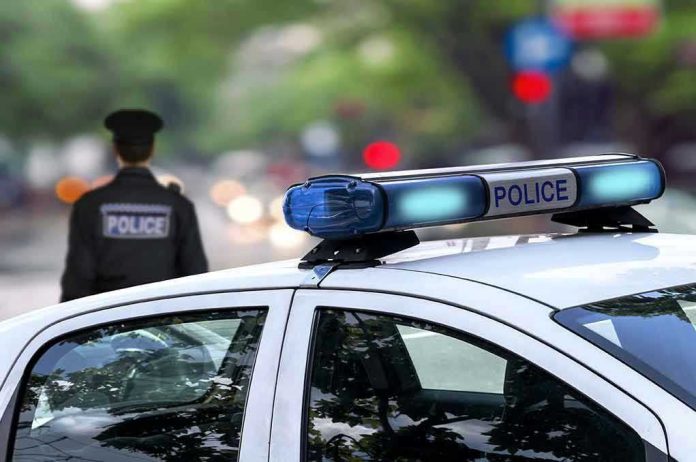
When a violent assault was brazenly captured on camera in downtown Cincinnati, the response from Ohio’s leaders wasn’t just swift—it was a wake-up call about how law and order should be handled when cities lose control.
At a Glance
- Ohio State Highway Patrol is now deployed to assist Cincinnati Police after a viral downtown assault.
- Governor DeWine authorized state traffic and aviation units to free up local police for criminal investigations.
- Community outrage forced city and state officials to act quickly after public safety concerns exploded online.
- Expanded state intervention could become a model for other crime-plagued cities struggling with violence.
State Steps In After Cincinnati Assault Shocks City
Governor Mike DeWine wasted no time deploying the Ohio State Highway Patrol to Cincinnati after a violent assault, caught in vivid detail on video, tore through social media and rattled residents. The attack, happening in late July 2025, wasn’t just another statistic—this was raw, viral evidence that city leadership had lost its grip on public safety right in the heart of downtown. The people of Cincinnati, already sick of rising crime and endless excuses, demanded real action. The governor delivered, announcing on July 31 that state-level officers and aviation units would bolster a Cincinnati Police Department clearly stretched beyond its limits.
Ohio State Highway Patrol to support Cincinnati on the heels of violent assault caught on camera https://t.co/eWGTAzV7pF
— Fox News (@FoxNews) July 31, 2025
This isn’t some abstract, bureaucratic gesture. The state’s elite traffic and aviation teams are now actively working Cincinnati’s streets and skies. Their mission: handle the day-to-day so local police can dig into the surge of violent incidents plaguing the city. The message from the top couldn’t be clearer—enough with the hand-wringing, enough with excuses. When public safety is on the line, you either step up or step aside. DeWine’s move is a sharp contrast to the limp, reactive leadership that’s become all too common in cities overrun by crime and hamstrung by “progressive” policies that tie law enforcement’s hands.
Public Outcry Forces City Leaders to Accept Help
The catalyst for this intervention was not just the severity of the crime, but also the tidal wave of public anger that followed. Cincinnati’s residents and business owners demanded answers, not platitudes. Their message reached city hall: restore order or risk losing the public’s trust entirely. Mayor Aftab Pureval and Police Chief Teresa Theetge faced intense pressure to act decisively. Accepting state help wasn’t just a practical step—it was an admission that local resources, hampered by years of underfunding and political interference, couldn’t keep pace with growing lawlessness.
For years, cities like Cincinnati have seen crime spikes met with little more than “community conversations” and “task forces” that rarely amount to concrete results. This time, the public outcry was impossible to ignore. The viral video of the assault made it clear: people are tired of feeling unsafe in their own neighborhoods. Officials had no choice but to bring in outside muscle. With the Ohio State Highway Patrol now supplementing city police, residents are finally seeing a law enforcement response proportional to the threat they face daily.
State and Local Agencies Coordinate—But Who’s Really in Charge?
The situation unfolding in Cincinnati is a case study in how state intervention can fill the void left by weak local leadership. Governor DeWine retains the authority to deploy state resources where needed, but operational control on the ground remains with city officials—at least for now. The arrangement is designed to let Cincinnati Police focus on investigating violent crimes while the Highway Patrol handles traffic, surveillance, and support roles. Additional state assets—like corrections and intelligence units—are on standby, ready to deploy if the violence continues or escalates further.
This raises a critical question: when local governance falters, should the state take the reins to restore order? For conservatives, the answer is obvious—public safety isn’t negotiable. If city leaders can’t protect citizens, the state must step in. DeWine’s decision isn’t just about Cincinnati; it’s a warning shot to other cities where “soft on crime” policies have led to chaos. Cooperation between state and local agencies is essential, but there’s no room for political games when lives are on the line.
Is This the New Model for Fighting Urban Crime?
The deployment of the Ohio State Highway Patrol in Cincinnati could set a precedent for how future urban crime waves are handled. With crime rates spiking in cities across the country, this model of state-local cooperation—where the state provides direct, on-the-ground backup—could become the blueprint for restoring order elsewhere. Residents want real safety, not empty rhetoric or coddling of criminals. Effective policing requires support from all levels of government, not interference or obstruction from politicians more interested in virtue signaling than delivering results.
Time will tell whether this intervention leads to a lasting reduction in violent crime. What’s clear is that the people of Cincinnati have had enough, and they’re watching closely to see if their leaders—and the state—will finally put citizens first. Anything less is just more of the same failed policies that got us here in the first place.
Sources:
10TV: Ohio State Highway Patrol to support Cincinnati Police Department after weekend fight
Governor DeWine Announces State Support for Law Enforcement in Cincinnati









